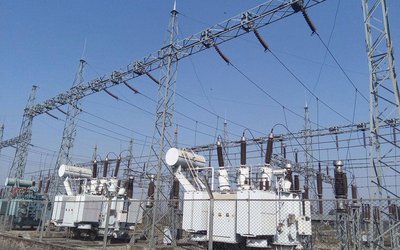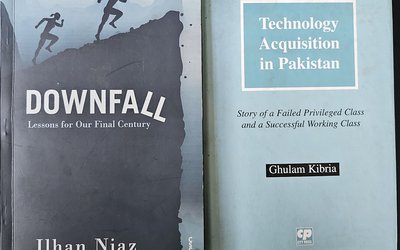Recently the government, perhaps in ignorance, took decisions on the implementation of major water resource projects with far reaching, adverse, consequences. The civil society show its concern and step in to prevent the plundering of the water resources.
The people have been kept in complete ignorance of the vast opportunities to produce abundant electricity, far more than what we would be able to consume in the foreseeable future with a relatively small capital investment or even almost free of cost, just like the way Canada did in the implementation of the Columbia hydropower projects. Even the Kingdom of Lesotho has done a similar work in the implementation of the Lesotho Highland projects.
Studies: By now Nepal would have been able to accelerate its industrial development across the country, primarily based on extremely cheap electricity produced by taking the comparative advantage of the vast hydropower potential of our water resources, if we had truly abided by the recommendations of the World Bank, FAO/UNDP, JAICA, GTZ etc. The recommendations were based on detailed feasibility studies carried out with enormous investments. But it is a great misfortune that our recent governments, instead of capitalizing on the comparative advantages of our water resources, are going ahead to kill even the most important and sensitive projects that are crucial for our country’s quick economic development. There is an acute urgency that the full attention of the entire civil community, social and government organizations be drawn to avert the dire consequences of the government’s mishandlings in order to save our water resources from being devastated.
Nepal’s planners and policy makers are mistaken to consider that the benefit to accrue from our major water resources storage projects is mostly electricity generation and the irrigation benefit could be ignored. They seemed to be completely ignorant about the vast studies of our water resources projects carried out in the past. The detailed feasibility studies have clearly established that the irrigation benefit to accrue actually to our country from large storage type projects would not just be comparable but it would even be far exceeding the power benefit. Let us take the case of the Kankai Storage Dam Project. According to the detailed feasibility study carried out under then West German Government assistance in 1980 the annual benefit to accrue from hydropower generation is only about US $ 7.24 million whereas the annual irrigation benefit was found to be US $ 31.46 million. The actual net irrigation benefit to accrue from other large multipurpose projects like the West Seti Project, Karnali(Chisapani) Project etc too are comparable to their power benefit.
Except for Sun Kosi, Kankai and Bhalubang (West Rapti) storage projects, the irrigation potential of other very large storage projects, like the Karnali, Kosi, West Seti Projects, are too great to be exploited wholly within our own country. Fortunately there is a good market for export of water to India. There is already an international practice to recover the value of exported water in terms of certain percentage on share of the benefits accruing to the water importing country. This type of benefit is called the downstream benefit.
Nepal’s long years of persistent efforts to recover its share of downstream benefits has already produced concrete results. A few years back the Atal Bihari Bajpayee Government had constituted a high level commission to recommend to the Indian Government suitable ways to pay royalty to Nepal for regulated water flowing across the border into India. Unfortunately our recent governments are deliberately shutting their eyes to this issue which is extremely vital for the swift economic upturn of our country and also to provide people of our country very cheap electricity in abundance.
Sun Kosi: The necessity of a large storage type project to meet our own growing demand for power, as said in some quarters, cannot be the justification to implement these projects without making proper arrangements to recover a certain percentage on downstream benefits accruing to India if the irrigation potential of such projects is too large to be fully exploited within our own country. There are other good alternatives. The government could now select a far more preferable project such as the Sun-Kosi diversion storage project or the West Rapti (Bhalubang) project, which are comparable to the West Seti Project in size, to meet our future demands for power. In addition to power, those two projects would have provided enormously large irrigation and flood control benefits within Nepal itself.
Apart from irrigating about 300,000 hectares of Eastern Terai, the Sun-Kosi project would have greatly helped to minimize the risks to life and property of tens of thousands of people living in Sunsari and Morang districts. Similarly the West Rapti project would have provided year round irrigation over vast areas extending from the Gandak river to the further corner of Banke district.
Terai Politics. It is quite shocking that, very recently, the Ministry of Water Resources has decided to implement the Dudh-Kosi Storage Project that would considerably limit the area of the lands to be irrigated by the Sun-Kosi Project in Nepal. Unfortunately none of our water resources institutions, neither private nor public, raised their voices against this government decision. Even our main political parties and also the Terai based political parties, claiming to represent the interest of the Terai, are not at all seen to worry over such dreadful decision to ruin the irrigation prospect of the Eastern Terai. Apart from generation of cheap electricity and irrigation of almost the whole of Eastern Terai from Birgunj to Sapta-Kosi, the Sun-Kosi Project could be helping to save the life and properties of tens of thousands of people living in Sunsari, Morang and Saptari districts by controlling the maximum discharge and the high sediment flow of the Sapta-Kosi River.
- TANAHU HYDROPOWER PROEJCT: A Significant Achievement
- Apr 15, 2024
- AMBASSADOR HANAN GODAR: Sharing Pain With A Nepali Family
- Mar 30, 2024
- VISIT OF KfW AND EIB TO NEPAL : Mission Matters
- Mar 25, 2024
- NEPAL BRITAIN SOCIETY: Pratima Pande's Leadership
- Mar 24, 2024
- NEPAL ARMY DAY: Time To Recall Glory
- Mar 15, 2024
















